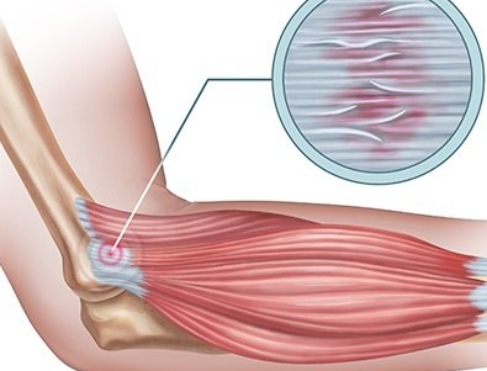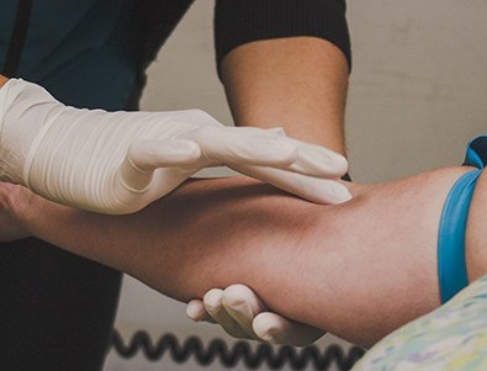Treating Tennis Elbow Glastonbury
Effective, Lasting Relief for Tennis Elbow

Despite being called tennis elbow, only around 10% of all patients with this condition are tennis players. Tennis elbow is the most common cause of all cases of elbow pain. If conservative therapies fail to help your tennis elbow, Dr. Paul Tortland at New England Stem Cell Institute in Glastonbury offers regenerative medicine for treating tennis elbow that can speed up healing and relieve your pain.
What Causes Tennis Elbow?

Tennis elbow, or lateral epicondylitis, results when you suffer an overuse injury in the tendons that attach the muscles in your forearm to your elbow. These muscles are responsible for extending and turning your wrist. As you repeatedly make the same wrist movements, the ongoing stress placed on the tendons causes small tears that become inflamed and painful.
This injury frequently appears in tennis players due to their repetitive arm movements, but they’re not the only ones affected by it. Any occupation or activity that requires the same arm and hand motions increases your risk of lateral epicondylitis.
What Symptoms Develop Due to Tennis Elbow?

The primary symptom is pain or a burning sensation in the outer part of your elbow near its prominent bony bump. If you continue to take part in the same activity, the soft tissue injury and the pain will get worse. Over time, the pain can radiate into your arm and wrist. As the damage gets worse, your grip can weaken, and activities like shaking a person’s hand or picking up a spoon or fork become surprisingly painful.
Learn More About Tennis Elbow Symptoms
How is Tennis Elbow Treated?

The first line of treatment for tennis elbow includes conservative therapies like physical therapy and adjusting your activities to give the muscles and tendons time to rest and heal. You might wear a wrist or elbow brace to relieve the stress placed on the tendons.
If these conservative treatments fail to relieve your pain or improve the problem, the team at New England Stem Cell Institute can help your tendon heal with regenerative medicine treatments like platelet-rich plasma (PRP) and prolotherapy.
PRP
PRP is produced by extracting and concentrating platelets from a sample of your own blood. We precisely inject PRP into the torn area of the tendon using ultrasound to see the soft tissues and carefully guide the needle. Once the platelets are injected, they release growth factors that trigger healing and tissue regeneration.
Prolotherapy
During prolotherapy, your doctor injects a mixture of dextrose and Novocaine™ into the damaged tendon. Novocaine provides immediate pain relief while dextrose is a simple sugar that triggers your body’s natural ability to repair the tendon. Patients often need several injections depending on the severity of their tennis elbow.
